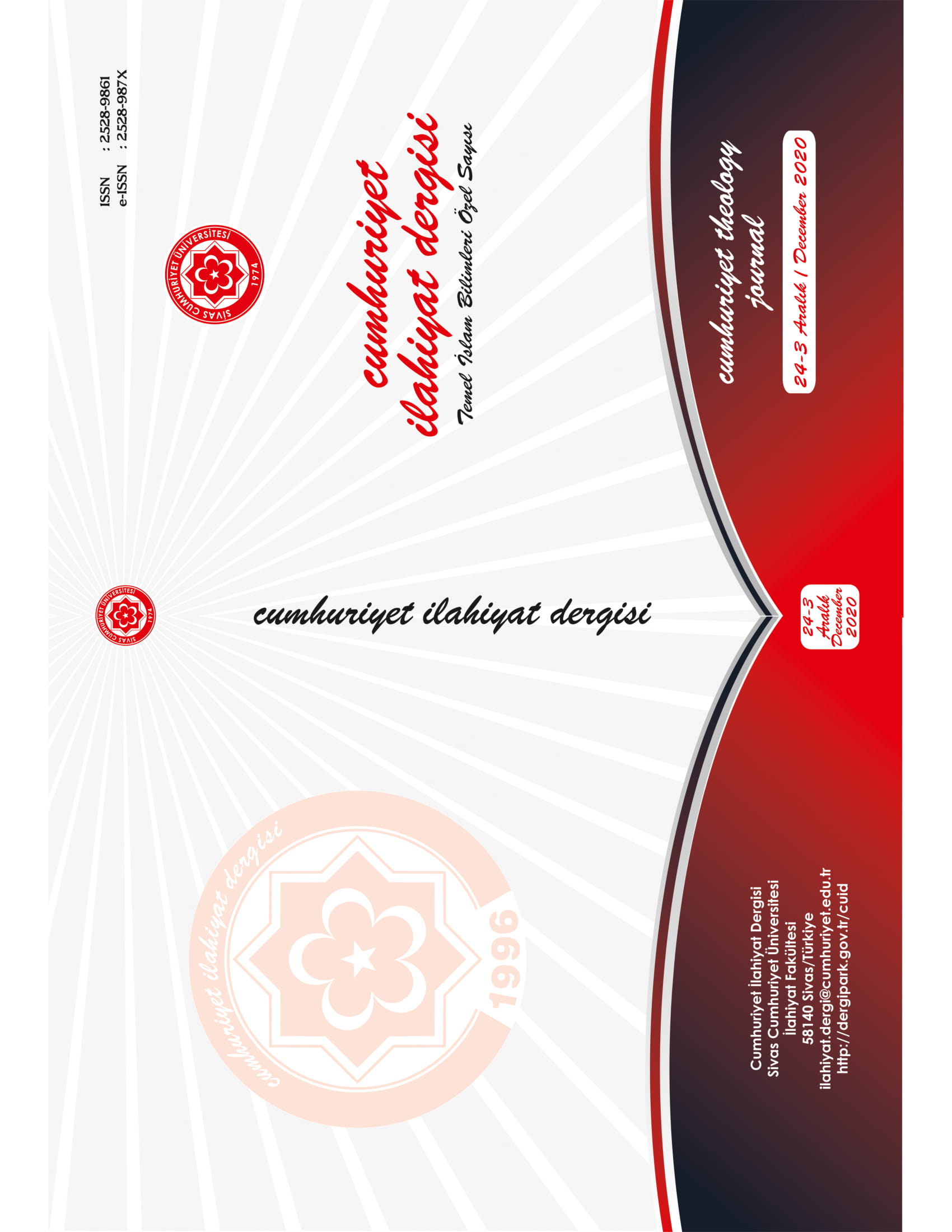Bağdat’ın Moğollar Tarafından İşgalinin Arap Şiirindeki Yankıları: Bir Şehir Mersiyesi Örneği Olarak Şemseddîn el-Kûfî’nin Kasîde-i Nûniyyesi
Echoes of Baghdad’s Occupation by Mongols in Arabic Poetry: al-Kasīda al-Nūniya of Shamsaddīn al-Kūfī as an Example of City Dirge
Author(s): Mücahit KüçüksarıSubject(s): History, Language and Literature Studies, Theology and Religion, Islam studies
Published by: Cumhuriyet Üniversitesi İlahyat Fakültesi
Keywords: Arabic Language and Rhetoric; Mongolian invasion; Baghdad; City Dirge; Shamsaddīn al-Kūfī;
Summary/Abstract: One of the most rooted topics in Arabic poetry is the dirge. It shows that during the Jāhiliyya period, people lamented the dead at the graves and remembered their beautiful qualities. A similar situation continued in terms of content in the dirges that were said in the following periods. However, with the change of social, political and cultural conditions in time, there have been partial changes in the writing styles and purposes of the dirges. For example, the effects of political and sectarian factors were felt more in the process that started with the Umayyad period and continued in the following centuries. On the other hand, it has been observed that poets wrote dirges not only for the people they love but also for themselves, the animals they owned and the cities they lived in. In Arabic literature, dirges written for cities became famous and widespread, especially during the Andalusian period. However, considering that the poets of the Jahiliyya period lament the lands abandoned by the beloved, especially in the first part of the ode, it can be said that the tradition of writing elegies for cities dates back to much earlier times. On the other hand, the destruction of cities during the Abbasid period due to many wars, especially the Mongol invasion, caused many poets to recite dirges for these destroyed cities. One of the cities damaged during this period is Baghdad, one of the most important cities of Islamic culture and civilization. As it is known, Baghdad was occupied by the Mongols in 1258. As a result of this occupation, also known as the Baghdad disaster, many of the material and spiritual wealth of the city were destroyed. For this reason, the event had great repercussions in Arabic poetry, and many poets who could not remain unresponsive to what happened elegized for Baghdad. One of these poets is Shamsaddīn al-Kūfī (d. 675/1256), whose al-Kasīda al-Nūniya is the subject of our study. Shamsaddīn al-Kūfī, who was born in 623/1226 in Kufa, is one of the leading literary scholars and poets of his period. Due to the fact that the Baghdad disaster affected his poems to a great extent, he was given the title of Poet of Baghdad Disaster. When his poems are examined in general, it can be said that the dirges he sang for family members, friends, children of his friends and the city of Baghdad, which was destroyed by the Mongolian invasion, are at the forefront. The poet, who uses verbal arts such as tibāq and rad al ajuz alā al sadr intensively, places more importance on the meaning dimension of the issue in his dirges and uses arts related to meaning skillfully. al-Kasīda al-Nūniya, written by Shamsaddīn al-Kūfī in the Kamil bahr for Baghdad, is composed of 27 couplets. The theme of complaint about separation is addressed in the introduction part of the kasīda. Then, the main subject of the kasīda was put forward with the themes of the effects of the Mongolian occupation in Baghdad, the poet's feelings about this occupation, and the longing for the beautiful days in Baghdad. In the conclusion part, by returning to the theme of complaint about separation, a different internal structure from the contents of traditional Arabic poetry is displayed. This organization, while in keeping with the spirit of the type of city dirge that reflects the disaster experienced in a city, also provides fluency. While words that are easy to pronounce and suitable for morphology rules are preferred in general, attention has been paid to the rules of eloquence. On the other hand, the poet mostly preferred informative sentences in which he conveyed the Baghdad disaster to the reader with all its truth. However, in the sections where he felt the need to express his emotional intensity in a more striking way, he enriched his expression with sentence types such as wonder, interrogation, oath and interjection. Shamsaddīn al-Kūfī frequently used jinās in his poems. In addition, the art of tibāk, which is one of the arts related to meaning, is one of the badī (creative) arts in its couplets. As a result, it was seen that the Mongol invasion had a considerable effect on Arab poetry within the framework of this city dirge, which Shamsaddīn al-Kūfī had recited, and that historical facts were transferred to the next periods with a poignant style in these poems.
Journal: Cumhuriyet İlahiyat Dergisi
- Issue Year: 24/2020
- Issue No: 3
- Page Range: 1157-1176
- Page Count: 22
- Language: Turkish

